Intel Arc graphics cards: 7 vital details you need to know

 Image: Brad Chacos/IDG
Image: Brad Chacos/IDGIntel’s Arc 7 graphics cards have been a long time coming. In fact, the wait stretched so long that excitement mostly fizzled about Team Blue taking on Nvidia and AMD. Gamers wanted a rescue from pandemic shortages and inflated pricing, and got none.
But better late than never—especially when Intel’s Arc A770 and A750 cards can pull out some impressive performance. Intel’s first generation of discrete GPUs represent huge potential for a healthy competitive environment, with three players in the ring all vying for the title of best in class.
The problem is, Arc is first-gen technology, and it’s got teething pains to get through still. If you happen to play the right kind of games, the Intel Arc A770 (available in $349 16GB and $329 8GB flavors) or $289 Intel Arc A750 might work for you. But if not, you should wait, or pick up a different card all together.
Our comprehensive Arc A770 and A750 review covers the full details, but here’s the basics of what to expect when these cards arrive on October 12th.
Only modern PCs need apply
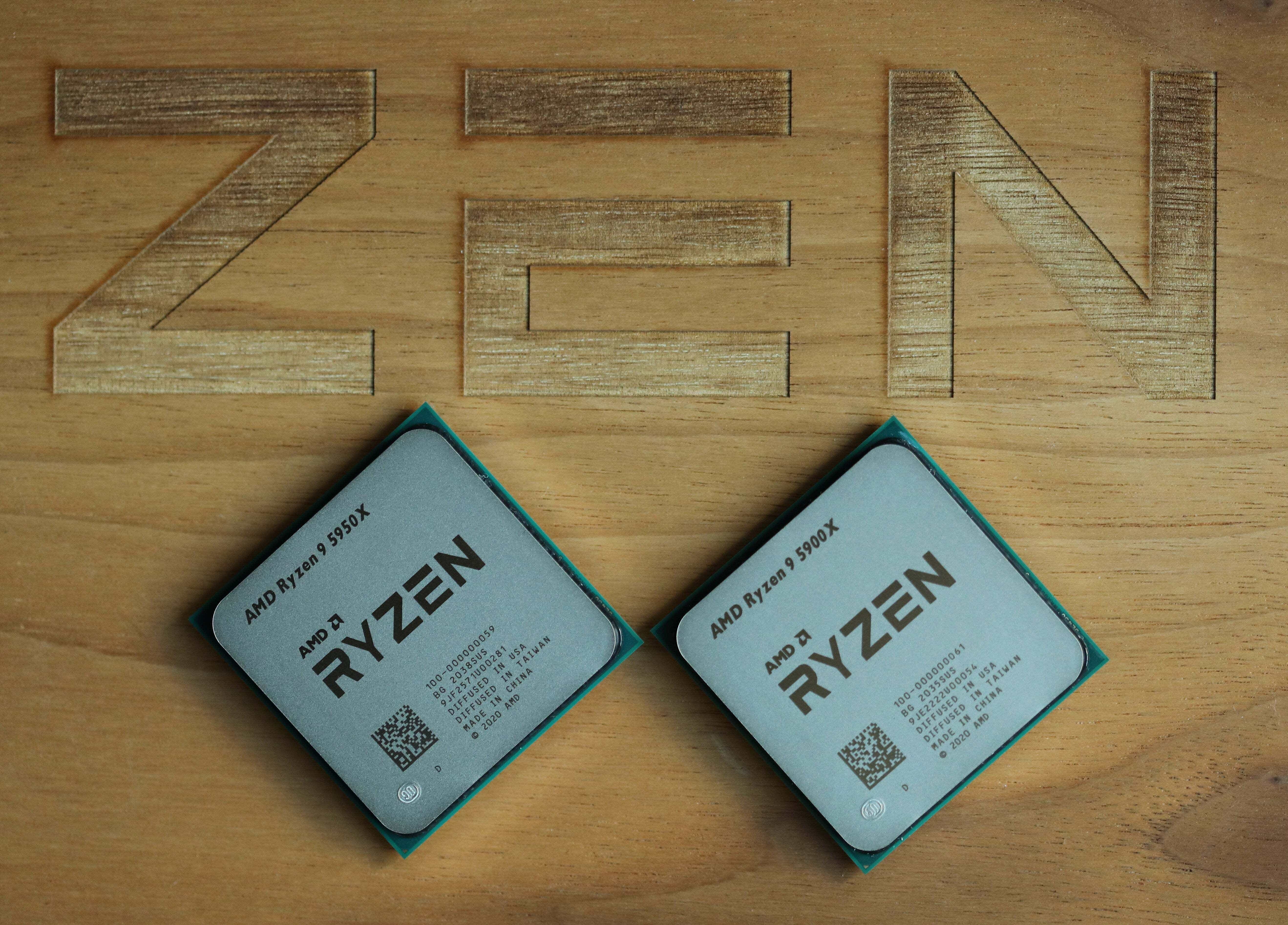
Gordon Mah Ung / IDG
Gordon Mah Ung / IDG
Gordon Mah Ung / IDG
Was your CPU manufactured before 2019? If you own something older than an AMD Ryzen 3000 (2019) or Intel 10th-generation Comet Lake (2020) processor, you’ll likely want a graphics card from a competing vendor.
The reason: Intel’s Arc cards lean heavily on a feature called resizable BAR, which is only available in modern processors. In fact, they only shipped as an out-of-the-box feature for Ryzen 5000 and 12th-generation Intel chips. You must perform a motherboard BIOS update before enabling it for older compatible chips.
The best 1080p gaming gpu, especially for older pcs
Radeon RX 6600 Swft 210
 Read our reviewPrice When Reviewed:$329.99Best Prices Today:$199.99 at Amazon | $229.99 at Newegg
Read our reviewPrice When Reviewed:$329.99Best Prices Today:$199.99 at Amazon | $229.99 at Newegg
Resizable BAR (also affectionately known as ReBAR) lets your CPU access all of your GPU’s memory framebuffer at once, rather than in 256MB chunks. On Nvidia GeForce and AMD Radeon graphics cards, flipping on ReBAR moderately boosts performance. But Arc’s memory controller design relies on ReBAR much more heavily, with more notable impact on frame rates in games and smoothness of gameplay when it’s off or unavailable. In five of our benchmarks, the difference between ReBAR on and off in DirectX 12 performance starts at 14 percent, with as much as a 38 percent gap.
Essentially, if you have an older PC and have been waiting for a more affordable graphics card to extend its life further, Arc isn’t it. You’re better off with an Nvidia or AMD option.
Performance rocks on modern APIs
Intel Arc 7 GPUs really love modernity—not just hardware, but APIs like DirectX12 and Vulkan, too. The top-tier Arc A770 can absolutely smash the competition in optimized games running those modern graphics APIs. In titles like Metro Exodus and Borderlands 3, Arc provides a significant performance uplift compared to the Nvidia GeForce RTX 3060 and AMD Radeon RX 6600, both at 1080p and 1440p.
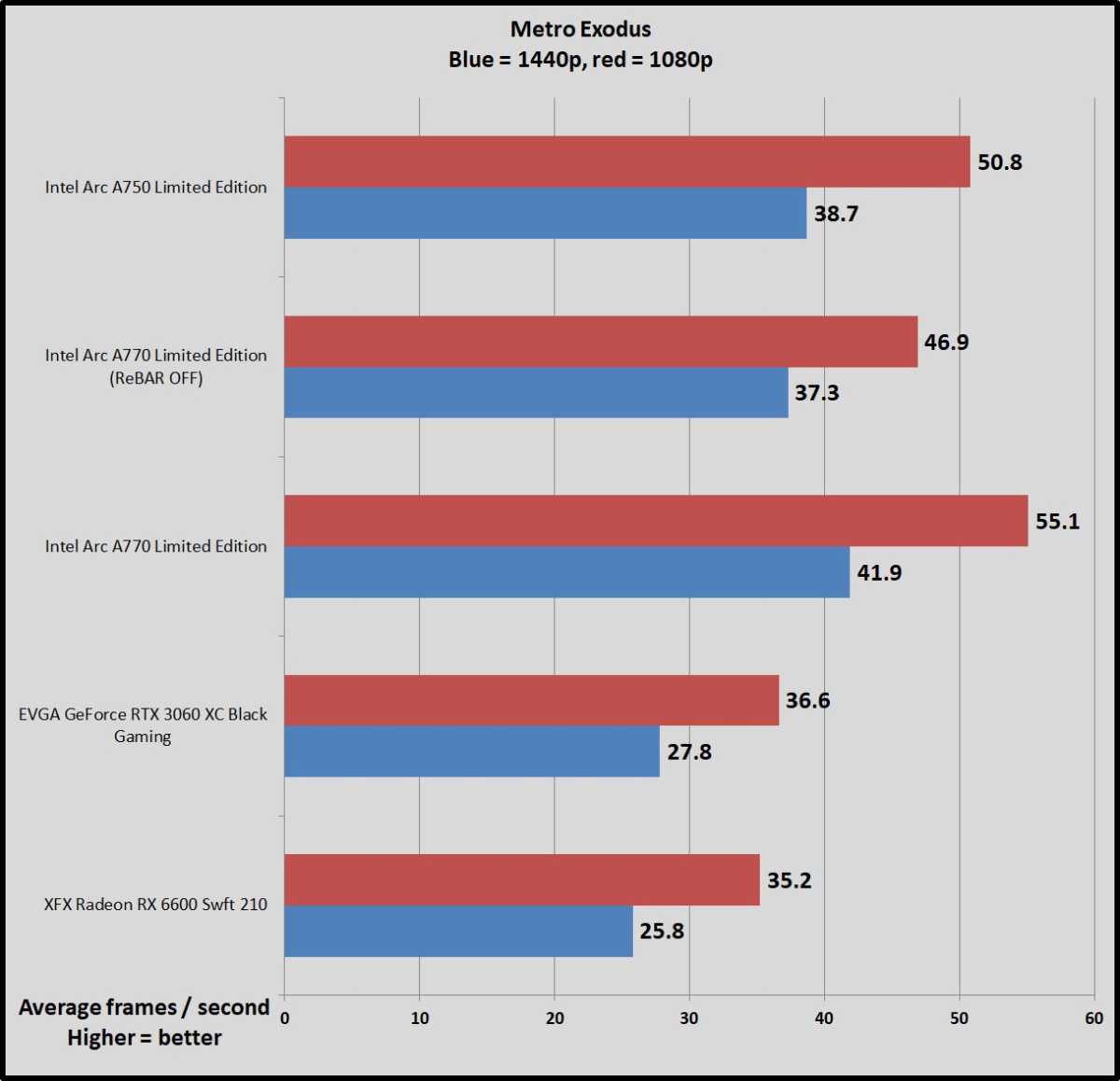
Brad Chacos/IDG
Brad Chacos/IDG
Brad Chacos/IDG
It’s not all wins for the Arc cards, however. Driver optimization is still a work in progress, and so AMD and Nvidia take a clear lead in some games, like in Cyberpunk 2077 and F1 2020 at 1080p. But dive into the numbers, and you’ll see it’s not a true loss—gamers still get near 60fps in Cyberpunk 2077 with all the ray-traced bells and whistles turned on. In other games, frame rates are well above that.
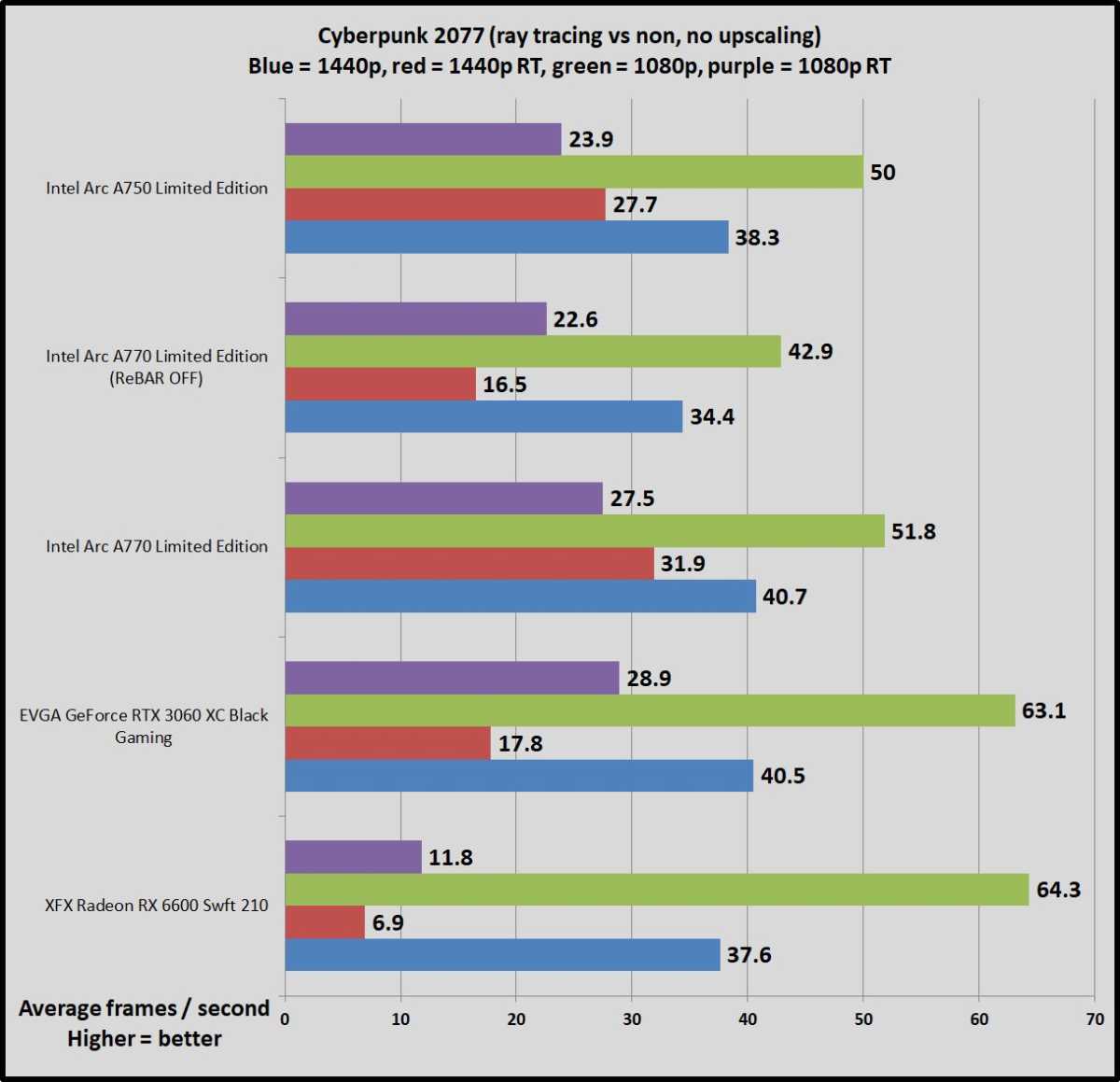
Brad Chacos/IDG
Brad Chacos/IDG
Brad Chacos/IDG
But nosedives in DirectX 11 in most cases
Arc shines in modern games with DirectX 12 and Vulkan support, but there’s one problem: A lot of games still use DirectX 11. Think indie games, or even AA projects (titles with tangible investment and resources, but not the huge blockbusters). Many people also have a huge backlog of older games to get through, and those rely on equally older APIs, like DirectX 9.
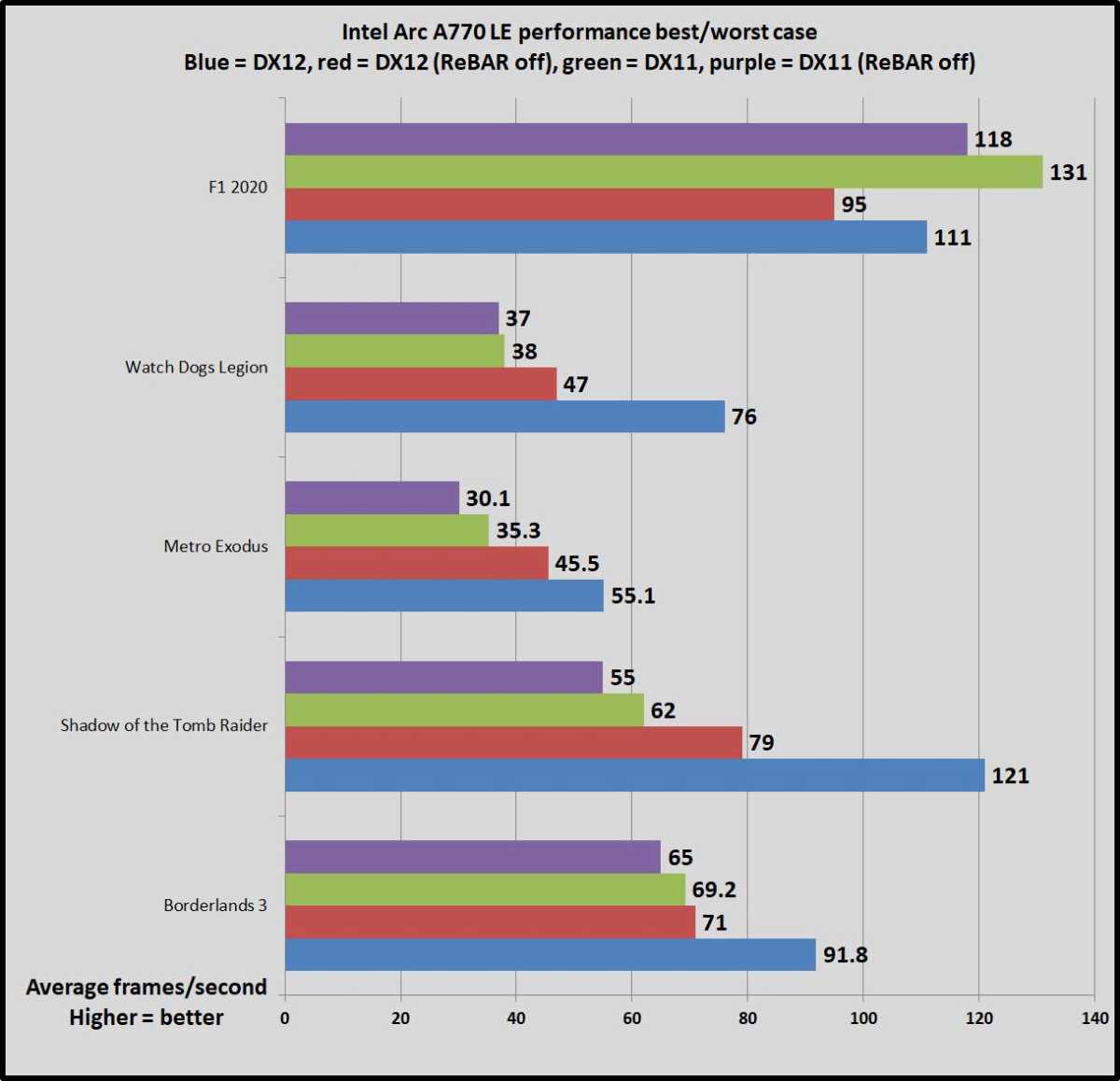
Brad Chacos/IDG
Brad Chacos/IDG
Brad Chacos/IDG
Take for example Shadow of the Tomb Raider. Using DX12, the game’s recommended API, both the Arc A770 and A750 easily keep pace with the competition. (Though the $350 16GB A770 is where Intel shines—it holds its own against the more expensive RTX 3060, while the A750 cedes some ground to its cheaper RX 6600 rival.)
But flip the switch to DX11, and the A770’s performance plummets. With resizable BAR left on, it runs 49 percent slower. Turn off reBAR, and it plunges down to 55 percent. The other games in our benchmark suite show performance losses between 25 and 50 percent with reBAR on in DX11 mode, and 29 to 51 percent with reBAR off. Ouch.
(The one oddball exception: F1 2020, where A770 gets a boost in performance when switching over to DX11 and turning reBAR off.)
Beats Nvidia’s RTX 30-series cards in ray-tracing
Hang on to your safety bar—this rollercoaster is about to hit another exhilarating loop-de-loop.
Nvidia has long held the crown for ray-tracing performance. It arrived first to the party, and then launched its Deep Learning Super Sampling (DLSS) tech to further boost performance by rendering frames at a lower resolution and then upscaling them.
But now that Intel has appeared on scene, Nvidia can no longer claim the top spot universally. The A770 beat the RTX 3060 in raw ray tracing performance (without upscaling features like DLSS or Intel’s XeSS active) in three of the four games we tested. The A770 (and A750) trounced AMD’s Radeon RX 6600, too.
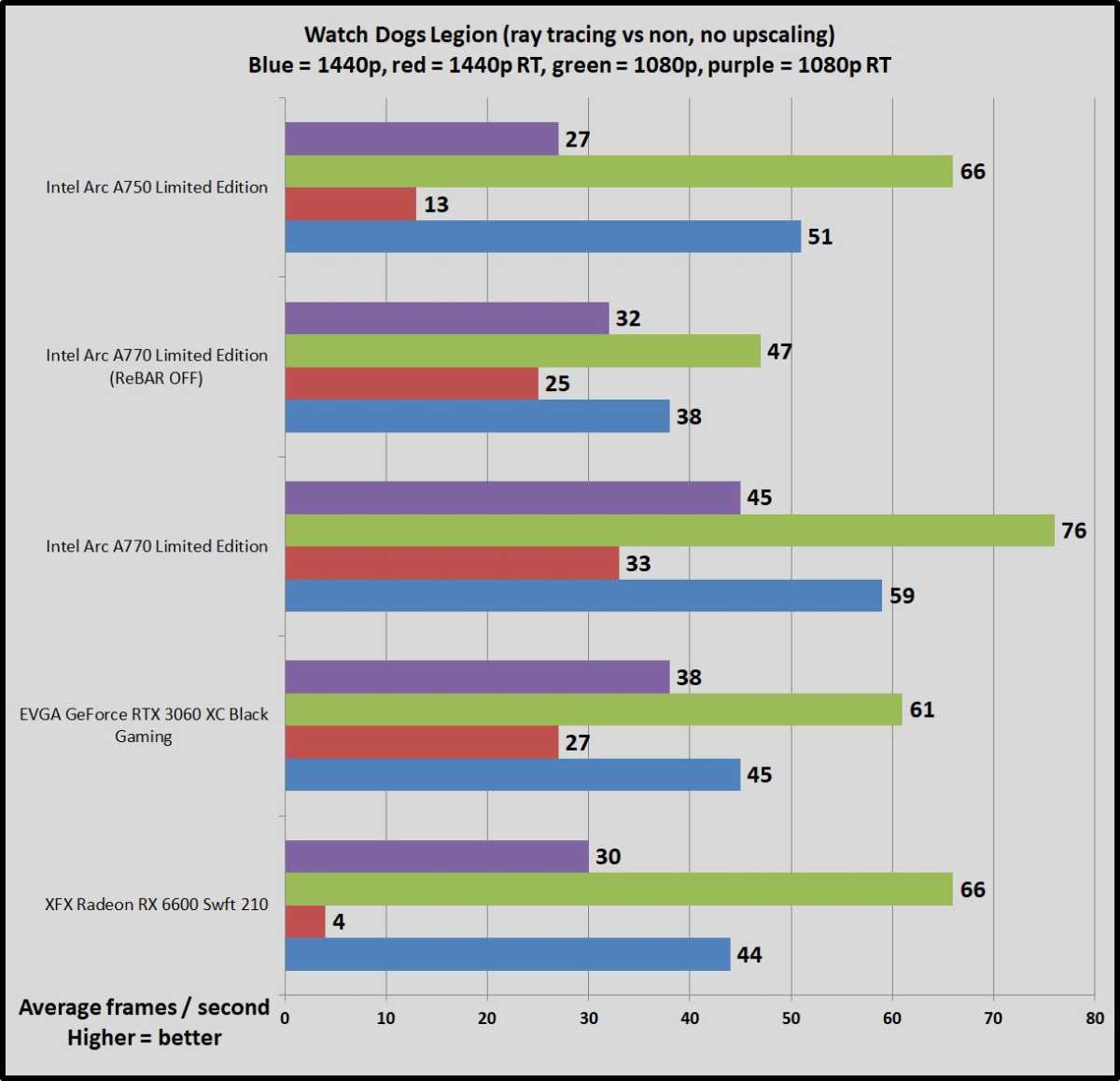
Brad Chacos/IDG
Brad Chacos/IDG
Brad Chacos/IDG
The catch: DLSS is far more developed, with more representation in games. In the real world, that means Nvidia can provide higher frame rates. Intel does have an equivalent technology for its cards, XeSS, but game support will take time. DLSS is currently in hundreds of games, while XeSS is only in a handful.
Still, in terms of raw performance, Intel should be able to hang onto this accolade for a bit. Nvidia’s upcoming launch of RTX 40-series of cards will initially focus on high-end, flagship cards—far above the A770 and RTX 3060’s price tier. An RTX 4060 (with presumably better ray-tracing performance) isn’t likely to launch until next year.
High power consumption, especially at idle

Brad Chacos/IDG
Brad Chacos/IDG
Brad Chacos/IDG
In the US, power draw didn’t use to be as much of a conversation. It was more of a thing checked for intellectual curiosity. But now with rising energy costs worldwide, the focus on hardware electricity use is increasing. (For example, our recent review of AMD’s Ryzen 7000 CPUs addresses this same issue.)
Unfortunately Intel Arc 7 cards consume more power than their Nvidia and AMD counterparts, both under load and at idle. In fact, the idle power use is startling—in our measurements of whole system power draw, our Arc machines used nearly double that of rivals. Even under load, you’re looking at about 50 percent more use than the RX 6600. (The A770 at least offers higher performance, though.)
This news isn’t a complete surprise, given that the RTX 3060 and RX 6600 use single 8-pin connectors, while Arc uses 8-pin + 6-pin. But if your electricity rates have gone up, this could be another point of major consideration.
Better looking, lower bandwidth encodes
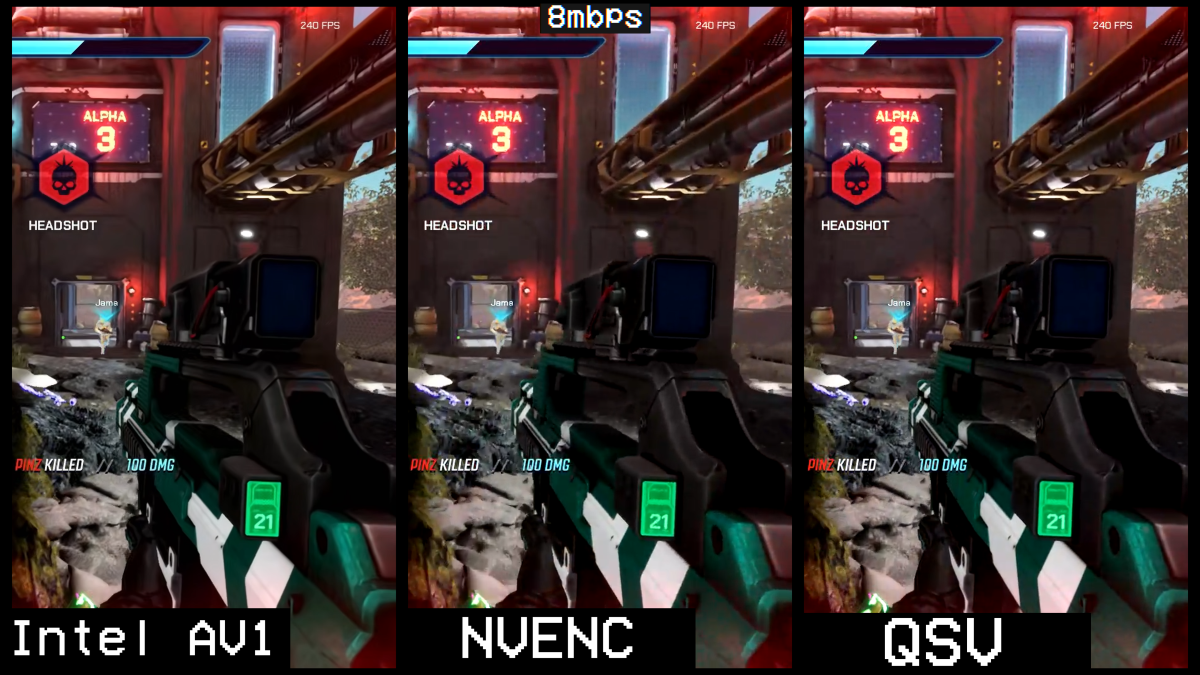
Adam Taylor/IDG
Adam Taylor/IDG
Adam Taylor/IDG
Right now, Intel is the only company that supports AV1 encoding—a form of encoding that improves the image quality while also reducing bandwidth needed to view the video. That’s a huge boon for streaming and capture uploads, and as our Arc AV1 testing shows, Intel’s results look incredibly promising.
However, don’t run out to grab an Arc 7 card just for this benefit. All Arc cards support this encoding feature, including the Arc A770 and A750’s much-cheaper sibling, the $140 Arc A380. Pick up an Arc 7 card if you want the stellar modern AAA gaming performance and AV1 encode support as well. Otherwise, if your only goal is to supercharge your capture/streaming PC, you can save some cash.
Driver support is a work-in-progress
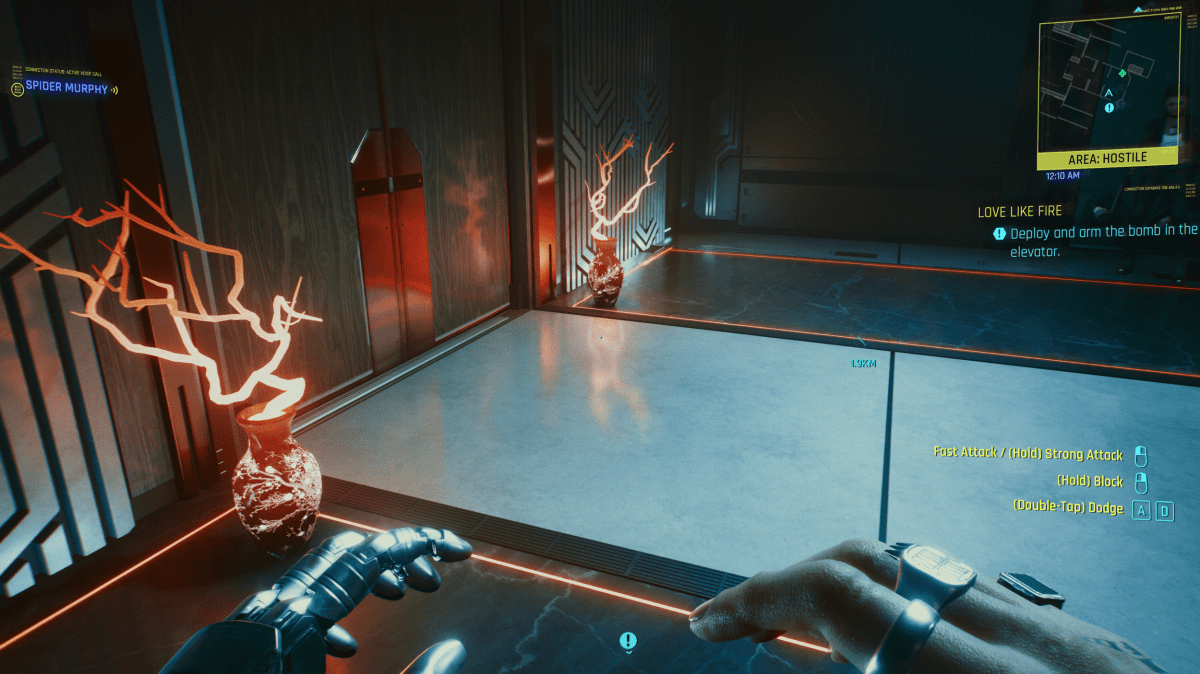
Thiago Trevisan/IDG
Thiago Trevisan/IDG
Thiago Trevisan/IDG
When Intel’s low-end Arc A380 launched in China earlier this year, driver issues plagued the hardware. The situation has greatly improved since then, but Intel’s newest Arc GPUs still suffer from glitches at launch.
If you buy one of these cards, keep a reserve of patience on hand. During our testing, our benchmark machine locked up several times—nothing recurring or showstopping, just irritating. Windows also required permissions approval for Intel’s Arc Control app upon each reboot.
That said, Intel also fixed a large number of issues just during the review period: games that failed to launch all together, app crashes when using a certain API mode or features like ray-tracing, and game corruption.
Nvidia and AMD have much headway on this front, with AMD in particular having largely turned around public perception of its drivers. Intel still has a bumpy ride ahead, as noted in our full Arc A770 and A750 review—so you have to decide if you’re willing to take that bone-rattling in exchange for an affordable graphics card.
Author: Alaina Yee, Senior Editor

Alaina Yee is PCWorld’s resident bargain hunter—when she’s not covering software, PC building, and more, she’s scouring for the best tech deals. Previously her work has appeared in PC Gamer, IGN, Maximum PC, and Official Xbox Magazine. You can find her on Twitter at @morphingball.
Recent stories by Alaina Yee:
Oof. Desktop GPU sales are down almost 40% year-to-yearTested: Nvidia’s GeForce RTX 4090 pushes laptops to blistering new frontiersGraphics card prices are plummeting. Should you buy now, or wait?







